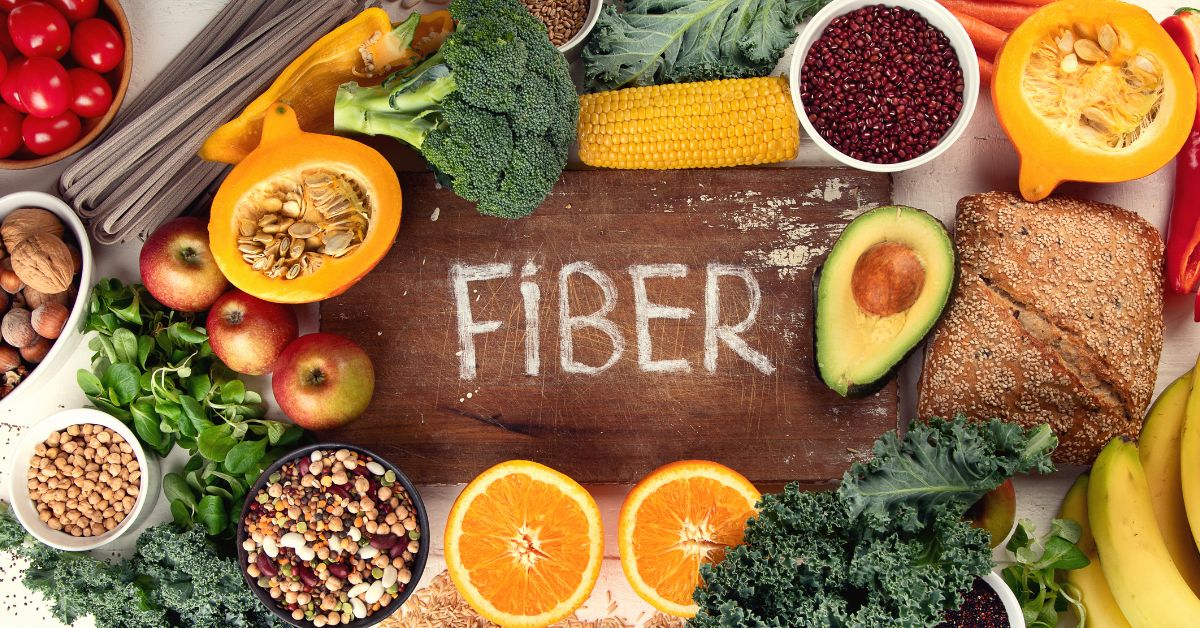Fibre plays a crucial role in maintaining your dog’s overall health.
While often overlooked, the right amount of fibre in your dog’s diet can lead to numerous health benefits, from improved digestion to better weight management.
In this comprehensive guide, we’ll explore why fibre is essential for your dog’s diet and how to incorporate it effectively.
Introduction
Understanding the role of fibre in your dog’s diet is vital for ensuring they lead a healthy and active life.
Just like humans, dogs need fibre to help with digestion, maintain a healthy weight, and prevent various health issues.
This guide aims to provide you with all the information you need about fibre and its importance in your dog’s diet.


Understanding the Role of Fiber in Your Dog’s Diet
Fibre is a type of carbohydrate that the body can’t digest. In dogs, it helps to move food through the digestive system, absorb nutrients, and maintain overall gut health.
Fibre can be found in many plant-based foods, including fruits, vegetables, and grains. Including the right type and amount of fibre in your dog’s diet can significantly impact their well-being.
The Types of Fiber
There are two main types of fiber that can benefit your dog’s diet: soluble and insoluble fiber. Each type has unique benefits and functions that support different aspects of your dog’s health.
Soluble Fiber: Benefits and Sources
Soluble fibre absorbs water and forms a gel-like substance during digestion. This slows down the digestive process, allowing for better nutrient absorption and regulating blood sugar levels.
Common sources of soluble fibre include oats, peas, beans, apples, citrus fruits, and carrots.
Insoluble Fiber: Benefits and Sources
Insoluble fibre adds bulk to the stool and helps food pass more quickly through the stomach and intestines.
This type of fibre is essential for preventing constipation and maintaining regular bowel movements.
Foods rich in insoluble fibre include whole grains, nuts, beans, and vegetables like cauliflower, green beans, and potatoes.
Health Benefits of Fiber for Dogs
Incorporating fibre into your dog’s diet can lead to several health benefits, ranging from improved digestive function to better weight management and disease prevention.
Improved Digestive Function
Fiber aids in regulating your dog’s digestive system by promoting regular bowel movements and preventing constipation.
It helps to move food through the digestive tract more efficiently, which can prevent common digestive issues like diarrhea and constipation.
Additionally, fibre supports the growth of beneficial gut bacteria, which are crucial for a healthy digestive system.


Weight Management and Obesity Prevention
Fibre can help your dog feel fuller for longer, reducing their overall calorie intake and preventing overeating.
This is particularly beneficial for dogs prone to obesity, as it helps maintain a healthy weight. By bulking up their food, fibre ensures your dog gets the necessary nutrients without the extra calories.
Blood Sugar Control and Diabetes Prevention
Soluble fibre can slow down the absorption of sugar, helping to prevent spikes and dips in blood sugar levels.
This is especially important for dogs with diabetes or those at risk of developing the condition. A diet rich in fiber can help manage blood sugar levels and reduce the risk of diabetes.
Cholesterol Management
Soluble fibre can help lower LDL (bad) cholesterol levels by binding with bile acids in the intestines and removing them from the body.
This can reduce the risk of heart disease and improve overall cardiovascular health in dogs.
Sources of Fiber for Dogs
There are many natural sources of fibre that you can include in your dog’s diet. These sources not only provide fiber but also other essential nutrients that contribute to your dog’s overall health.


Vegetables Rich in Fiber
Vegetables are an excellent source of fibre for dogs. Carrots, broccoli, green beans, and sweet potatoes are all high in fibre and can be easily incorporated into your dog’s meals.
These vegetables also provide essential vitamins and minerals that support your dog’s health.
Fruits that Provide Fiber
Fruits like apples, bananas, and berries are rich in fiber and can be a tasty addition to your dog’s diet.
These fruits also offer antioxidants and other nutrients that support immune health and overall well-being. However, it’s important to feed fruits in moderation due to their sugar content.
Grains and Legumes as Fiber Sources
Whole grains such as brown rice, quinoa, and oats are excellent sources of fibre. Legumes like lentils and chickpeas also provide a good amount of fibre and protein.
Including these in your dog’s diet can help ensure they get a balanced intake of fibre and other nutrients.
Commercial High-Fiber Dog Foods
Many commercial dog foods are formulated to include high levels of fibre. Brands like Scratch offer high-fibre options that use minimally processed, whole Australian produce.
These foods are designed to meet your dog’s nutritional needs while providing the benefits of a high-fiber diet.
Incorporating Fiber into Your Dog’s Diet
Adding fibre to your dog’s diet can be straightforward if done correctly. It’s important to introduce fibre gradually to avoid digestive upset and ensure your dog adapts well to the dietary change.


Gradual Introduction of Fiber-Rich Foods
Start by adding small amounts of fibre-rich foods to your dog’s meals and gradually increase the quantity over time.
This approach helps your dog’s digestive system adjust to the increased fibre intake without causing discomfort or gastrointestinal issues.
Creating Balanced Meals with Fiber
A balanced diet that includes fibre is essential for your dog’s health. Ensure that your dog’s meals contain a mix of proteins, fats, carbohydrates, and fibre.
This balance will help maintain their overall health and provide the nutrients they need for energy, growth, and repair.
Tips for Homemade High-Fiber Dog Meals
If you prefer to prepare homemade meals for your dog, focus on incorporating fibre-rich ingredients like vegetables, fruits, and whole grains.
Use recipes that are nutritionally balanced and consult with your veterinarian to ensure your dog is getting all the necessary nutrients.
Potential Risks and Considerations
While fibre is beneficial for your dog’s health, it’s important to monitor their intake and be aware of any potential risks or side effects associated with high-fibre diets.
Monitoring Fiber Intake
Keep an eye on your dog’s fibre intake and watch for any signs of digestive upset, such as diarrhea or constipation.
Adjust the amount of fibre in their diet as needed and consult with your veterinarian if you have any concerns about their digestive health.


Signs of Excess Fiber in Diet
Excess fibre can lead to digestive issues such as bloating, gas, and diarrhea. If you notice any of these symptoms, reduce the amount of fibre in your dog’s diet and monitor their response.
It’s important to find the right balance to avoid any adverse effects.
Consulting with Your Veterinarian
Before making significant changes to your dog’s diet, it’s always a good idea to consult with your veterinarian.
They can provide guidance on the appropriate amount of fibre for your dog’s specific needs and help you create a balanced and nutritious diet.
Conclusion
Incorporating fibre into your dog’s diet can lead to numerous health benefits, from improved digestion to better weight management and disease prevention.
By understanding the different types of fibre and how to include them in your dog’s meals, you can ensure they lead a healthy and happy life.


Summary of Fiber Benefits
Fibre supports digestive health, helps manage weight, controls blood sugar levels, and lowers cholesterol.
Including fibre-rich foods in your dog’s diet can enhance their overall well-being and prevent various health issues.
Final Tips for a Healthy, Balanced Diet
Remember to introduce fibre gradually, balance it with other nutrients, and monitor your dog’s response. Consult with your veterinarian to ensure your dog’s diet meets their specific needs.
With the right approach, you can provide your dog with the benefits of a high-fibre diet and support their long-term health.











